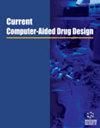Molecular Dynamics Simulation of SARS-CoV-2 E Ion Channel: The Study of Lone Protein and its Conformational Changes in Complex with Potential Cage Inhibitors
IF 1.6
4区 医学
Q4 CHEMISTRY, MEDICINAL
引用次数: 0
Abstract
Background: The coronavirus E ion channel has previously been studied as a potential target for antiviral therapy, with several compounds found to bind to the channel. However, these compounds have low activity, searching for effective E ion channel inhibitors of great importance. Objective: This study aimed to develop a computational approach for designing ligands for the coronaviral E ion channel and identify potential inhibitors based on this approach. Methods: The structure of the E-ion channel was refined using molecular dynamics, and the pore responsible for binding cage compounds was selected as the inhibitor-binding site. Potential inhibitor structures were identified using molecular docking, and their binding was confirmed using molecular dynamics simulations. Results: A number of potential SARS E ion channel inhibitors have been identified, and the binding modes and possible mechanisms of action of these inhibitors have been clarified. Conclusion: This study presents a computational approach that can be used to design ligands for E ion channels and identify potential inhibitors, providing valuable insights into the development of new antiviral therapies. The behavior of the E protein pentamer of SARS-CoV-2 in its native environment was investigated using Molecular Dynamics (MD), resulting in an equilibrated structure that could be used to develop new inhibitors through molecular docking. Simulation of the MD of E-channel complexes with amantadine analogues allowed for the identification of the main types of ligand-protein interactions that are responsible for the good binding of ligands within the channel's inner chamber.SARS-CoV-2 E 离子通道的分子动力学模拟:孤蛋白及其与潜在笼状抑制剂复合物的构象变化研究
背景:以前曾将冠状病毒 E 离子通道作为抗病毒治疗的潜在靶点进行过研究,发现了几种能与该通道结合的化合物。然而,这些化合物的活性很低,因此寻找有效的 E 离子通道抑制剂非常重要。研究目的本研究旨在开发一种设计冠状病毒 E 离子通道配体的计算方法,并在此基础上确定潜在的抑制剂。研究方法使用分子动力学方法完善 E 离子通道的结构,并选择负责结合笼状化合物的孔作为抑制剂结合位点。通过分子对接确定潜在的抑制剂结构,并通过分子动力学模拟确认其结合。结果:确定了一些潜在的 SARS E 离子通道抑制剂,并阐明了这些抑制剂的结合模式和可能的作用机制。结论这项研究提出了一种计算方法,可用于设计 E 离子通道的配体和鉴定潜在的抑制剂,为开发新的抗病毒疗法提供了宝贵的见解。利用分子动力学(MD)研究了 SARS-CoV-2 的 E 蛋白五聚体在其原生环境中的行为,得出了一个平衡结构,可用于通过分子对接开发新的抑制剂。通过模拟金刚烷胺类似物与 E 通道复合物的 MD,确定了配体与蛋白质相互作用的主要类型,这些相互作用是配体在通道内腔良好结合的原因。
本文章由计算机程序翻译,如有差异,请以英文原文为准。
求助全文
约1分钟内获得全文
求助全文
来源期刊

Current computer-aided drug design
医学-计算机:跨学科应用
CiteScore
3.70
自引率
5.90%
发文量
46
审稿时长
>12 weeks
期刊介绍:
Aims & Scope
Current Computer-Aided Drug Design aims to publish all the latest developments in drug design based on computational techniques. The field of computer-aided drug design has had extensive impact in the area of drug design.
Current Computer-Aided Drug Design is an essential journal for all medicinal chemists who wish to be kept informed and up-to-date with all the latest and important developments in computer-aided methodologies and their applications in drug discovery. Each issue contains a series of timely, in-depth reviews, original research articles and letter articles written by leaders in the field, covering a range of computational techniques for drug design, screening, ADME studies, theoretical chemistry; computational chemistry; computer and molecular graphics; molecular modeling; protein engineering; drug design; expert systems; general structure-property relationships; molecular dynamics; chemical database development and usage etc., providing excellent rationales for drug development.
 求助内容:
求助内容: 应助结果提醒方式:
应助结果提醒方式:


